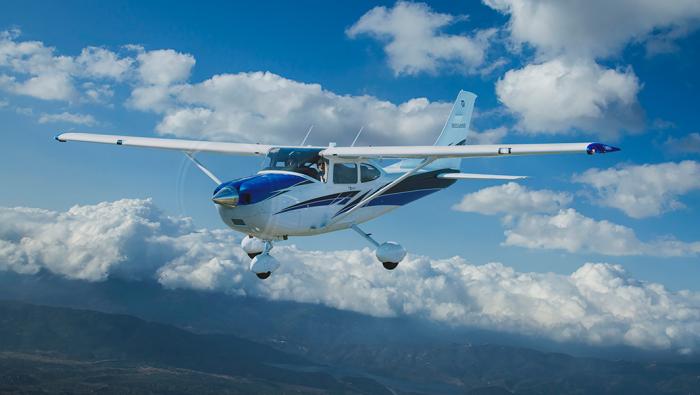|
July 26, 2024
Friday
 |
|
|
 World Fuel Services To Acquire Epic Fuels GA Business World Fuel Services has agreed to purchase Epic Fuels’ general aviation operations from Signature Aviation. In addition to Epic’s general aviation fueling network, the transaction will include its Epic Card business. Terms of the deal were not disclosed. The acquisition is subject to regulatory approval but is expected to conclude by the end of the year. In addition to all Epic Card holders, the transaction will give World Fuel Services 300 new fuel customers, including 100 FBOs, bringing its network to approximately 700 FBOs. In 2018, Signature Aviation (known then as BBA Aviation) purchased privately-held Epic—which had a network of more than 200 FBOs at the time—bringing a fueling division under its corporate banner for the first time. Under the terms of the agreement with World Fuel Services, Epic will retain its commercial fueling operation, along with its QT Pod self-serve fuel system division. |
|
 |
|
|
AINsight: Is VNAV a Pilot’s Friend or Foe? Full-regime lateral and vertical navigation systems were first introduced in third-generation air transport aircraft during the 1980s. Designed to ease workload, increase situational awareness, and improve flight path guidance, LNAV and VNAV systems are loved by generations of pilots. However, in contrast, these same automated systems—particularly VNAV—can be deemed overly complex and confusing by pilots, often resulting in unexpected or undesirable outcomes. Mastery of VNAV systems requires a deep understanding of its operation, programming, management, and—most of all—a high level of pilot discipline. As highlighted in a recent NASA ASRS Callback newsletter, the most common flight crew errors today are no different than those mistakes made in the past. While there is nothing novel about these errors, they are exacerbated by an increased reliance, within the U.S. National Airspace System, on RNAV SIDs, STARs, and space-based RNAV (GPS) instrument approaches. In the first Callback example, the crew of a corporate-operated Hawker 750 found themselves 400 feet too low while flying an RNAV instrument approach to LNAV/VNAV minimums. There were several contributing factors during this event, including heavy rain around the airport and the pilot monitoring being too focused (“heads down”) on programming the FMS rather than watching the pilot flying, mode selections, and autopilot status. Read more
|
|
 |
|
|
Bombardier Eyes Next Steps for Spirit Belfast Plant As Bombardier weighs the mergers and acquisitions space, the reacquisition of the Spirit AeroSystems facility in Belfast could be one of its next moves. Earlier this month, Spirit AeroSystems reached agreements with Boeing and Airbus to sell off the majority of its operations, but it also planned to seek buyers for certain facilities, including the Belfast plant that it had acquired from Bombardier in 2020. The Northern Ireland facility produces center fuselages for Bombardier's Challenger programs, forward fuselages for the Global 5500 and 6500, and horizontal stabilizers for all Globals (including the Global 7500), along with other key components such as engine nacelles. “Our priority right now is clearly to make sure that the existing contracts [for the Belfast work] will be upheld at the higher standard,” Bombardier president and CEO Éric Martel told analysts during the release of its quarterly earnings on Thursday morning. “As a customer, we're willing to provide the appropriate operational or structural or legal input to that. There'll be potential buyers at some point. We could also consider to be one of them. We'll see what the market says." This comes as Bombardier looks at the reserve cash it has begun to accrue. During its Investor Day in May, Bombardier opened the door to possible merger and acquisition activity as it accumulates free cash and continues to deleverage. Read more
|
|
 |
|
|
Georgia Bizjet Operator Scores Navy Training Contract The U.S. Navy has contracted with Georgia-based Phoenix Air Group to provide air services simulating airborne electric warfare (EW) threats for naval training exercises. Initially valued at $165 million, the five-year deal will use highly modified Learjet 35/36s to train, test, and evaluate shipboard crew and naval aircraft weapon systems operators. “The contract includes use of 10 Phoenix Air-owned and operated jet aircraft that can support up to 5,000 hours of EW jet capabilities for fleet scheduling on the East and West Coasts,” said a Naval Air Systems Command spokesperson. “They can be used in a variety of venues, from basic ‘schoolhouse’ air intercept control training, large multinational exercises, and small single unit training exercises including target/banner tow missions supporting the Navy, Department of Defense, and non-DoD agencies.” Headquartered at Cartersville-Bartow County Airport (KVPC), Phoenix Air currently operates a fleet of 37 aircraft. “Some are Learjets, but we are acquiring an additional six or seven Lears to support this contract, as well as other similar contracts we currently hold,” said Phoenix president Mark Thompson. “We will also be recruiting more pilots, maintenance staff, and other support personnel.” According to Phoenix Air, Learjet 35 and 36 are models “uniquely adaptable for military training exercises” since they are derivatives of 20-series Learjets that were designed based on a Swiss military fighter. |
|
 |
|
|
Low Fuel Leads to Falcon 10 Crash in Afghanistan An air ambulance Dassault Falcon 10 that crashed into a snow-covered mountain in Afghanistan in January had attempted to make an emergency landing after running low on fuel, according to information in a recent safety report from the Russian Interstate Aviation Committee. The 1978 Falcon, which Air Safety Network preliminary information said was registered to Athletic Group (RA-09011), was carrying two crew and four passengers—two medical workers and two others being transported. The crew and medical workers were injured, while the other two were killed. The aircraft departed from U-Tapao Airport in Thailand at 1:20 p.m. local time on January 20 for the 3,895-nm journey to Zhukovsky Airport in Moscow. Preliminary information reveals that the aircraft refueled at Gaya International Airport in India and continued at 4:10 p.m. local time toward a second refueling at Tashkent International Airport in Uzbekistan. However, a deviation led to additional fuel consumption, and at about 7:05 p.m. the crew radioed that they were low on fuel. Fourteen minutes later, the crew reported one engine had flamed out; 10 minutes later the second engine had flamed out. The crew initially hoped to make an emergency landing at Kulob Airport in Tajikistan but instead decided to make an emergency landing in the mountainous area of the Islamic Emirate of Afghanistan and ended up colliding with the mountain slope. |
|
 |
|
|
Airbus Invests in LanzaJet to Ramp Up SAF Production Airbus is investing in sustainable aviation fuel (SAF) technology pioneer and producer LanzaJet, underscoring the aerospace giant's ambition to catalyze the global development of eco-friendly biofuels. LanzaJet and Airbus did not specify the amount of the investment, but LanzaJet CEO Jimmy Samartzis called the contribution from Airbus "important" for the growth of the company. This investment will support the development of alcohol-to-jet (ATJ) pathways, as well as enable LanzaJet to expand its capability and capacity to scale its proprietary ethanol-to-SAF technologies. “Sustainable aviation fuels are one of the most important levers available to decarbonize aviation, but their production is still limited," said Airbus chief sustainability officer Julie Kitcher. "Our partnership with LanzaJet demonstrates Airbus' commitment to working with leading energy technology suppliers to explore innovative production pathways and scale SAF." LanzaJet’s technology uses low-carbon ethanol to create SAF that reduces life cycle carbon emissions by more than 70% versus jet-A. It can further decrease emissions with a suite of carbon reduction technologies. The company is operating the world’s first commercial-scale production of ethanol-to-SAF at its Freedom Pines Fuels facility, which opened earlier this year in Soperton, Georgia.This plant will produce SAF and renewable diesel from low-carbon and sustainable ethanol and serves as a blueprint to scale SAF production. With projects spanning 25 countries and five continents, LanzaJet is working to scale ATJ globally. Read more
|
|
|
|
|
Harbour Air Electric Beavers Draw Oshkosh Crowds Among the few electric aircraft this week at EAA AirVenture 2024 were two Harbour Air electric de Havilland DHC-2 Beavers, one of which was supposed to be the afternoon flying display on Tuesday, but a rapidly developing rain shower prevented the flight. But with one eBeaver parked at the seaplane base and another on the show grounds, there were plenty of opportunities to see these unique machines at AirVenture. They were both disassembled and shipped to the Oshkosh, Wisconsin venue in containers and then reassembled onsite. Harbour Air has been working with electric propulsion developer MagniX for many years and first flew the eBeaver in December 2019 from Fraser River in Vancouver, Canada, for an eight-minute flight. The original version was powered by a 500-kilowatt magni500 motor derated to 338 kilowatts to match the Beaver’s 450-hp piston engine. Read more
|
|
|
Sponsor Content: Textron Aviation  The Cessna Piston Family: Experience An Iconic Aircraft With Modern New Designs When you fly a Cessna piston, it's about experiencing the flight, not just the destination. The full line of Cessna pistons have new instrument panels, sleeker interior designs, improved tech and exterior schemes. Enjoy style and convenience without sacrificing durability. Read more
|
|
|
Redbird Brings Mixed-reality Training Platform to Market The Aerospace Center for Excellence in Lakeland, Florida, will be the first aviation education organization to install Redbird Flight’s new mixed-reality training platform. Redbird unveiled a proof of concept of the platform at EAA AirVenture 2022 and this week is debuting the next-generation trainer at the 2024 edition in Oshkosh, Wisconsin. Combining a virtual reality headset with proprietary software, the mixed-reality platform will serve as a foundation for future add-ons to new and existing Redbird training devices, the company said. The platform, which is integrated into the company’s core simulation engine, blends physical and digital features, giving pilots a view of simulation graphics through the headset, along with the feel of real-world flight controls. Read more
|
|

Photo of the WeekNight airshow spectacular. The first night airshow this week at EAA AirVenture in Oshkosh, Wisconsin—captured here by AIN editor-in-chief Matt Thurber—thrilled crowds with a stunning fireworks display behind a B-52 parked on Boeing Plaza. A second AirVenture 2024 night show is scheduled for tomorrow evening, and Matt said “it’s well worth the trip” if you’re in the area. Thanks for sharing, too, Matt! Keep them coming. If you’d like to submit an entry for Photo of the Week, email a high-resolution horizontal image (at least 2000 x 1200 pixels), along with your name, contact information, social media names, and info about it (including brief description, location, etc.) to photos@ainonline.com. Tail numbers can be removed upon request. Those submitting photos give AIN implied consent to publish them in its publications and social media channels. |
|
|
|
|
AINalerts News Tips/Feedback: News tips may be sent anonymously, but feedback must include name and contact info (we will withhold name on request). We reserve the right to edit correspondence for length, clarity, and grammar. Send feedback or news tips to AINalerts editor Chad Trautvetter. |
|
AINalerts is a publication of AIN Media Group, 214 Franklin Avenue, Midland Park, New Jersey. Copyright 2023. All rights reserved. Reproduction in whole or in part without permission is strictly prohibited. |







